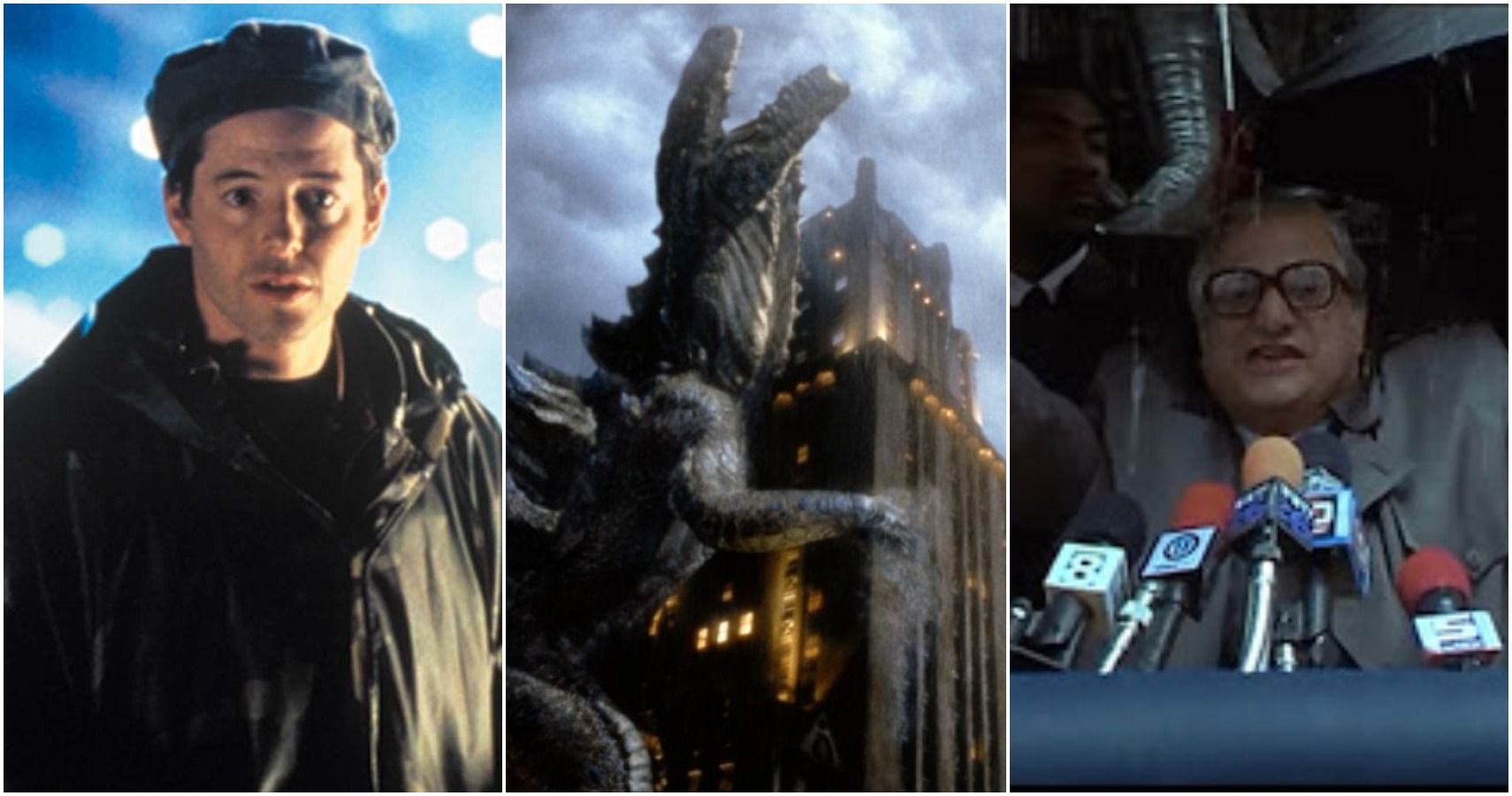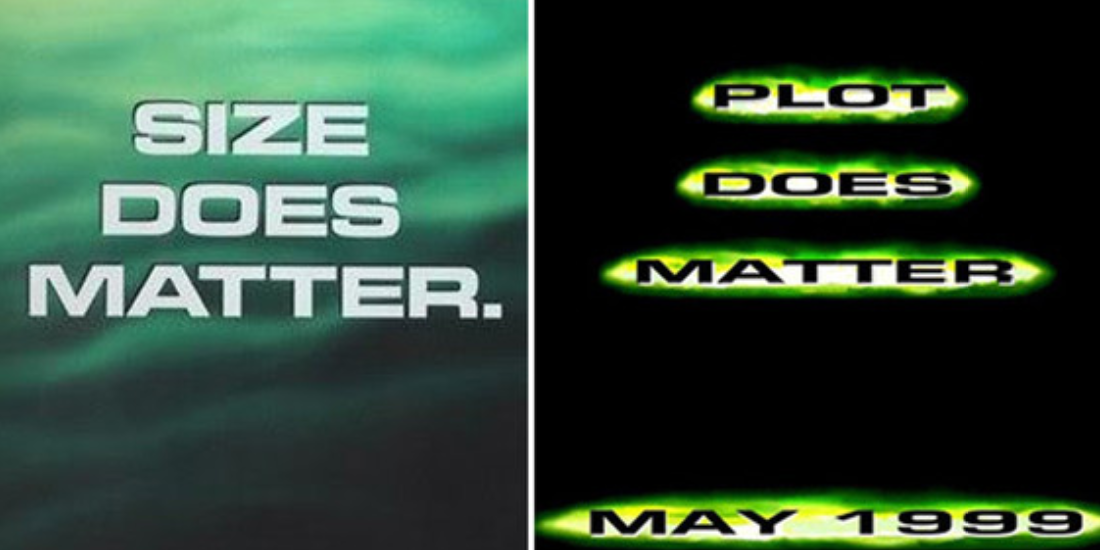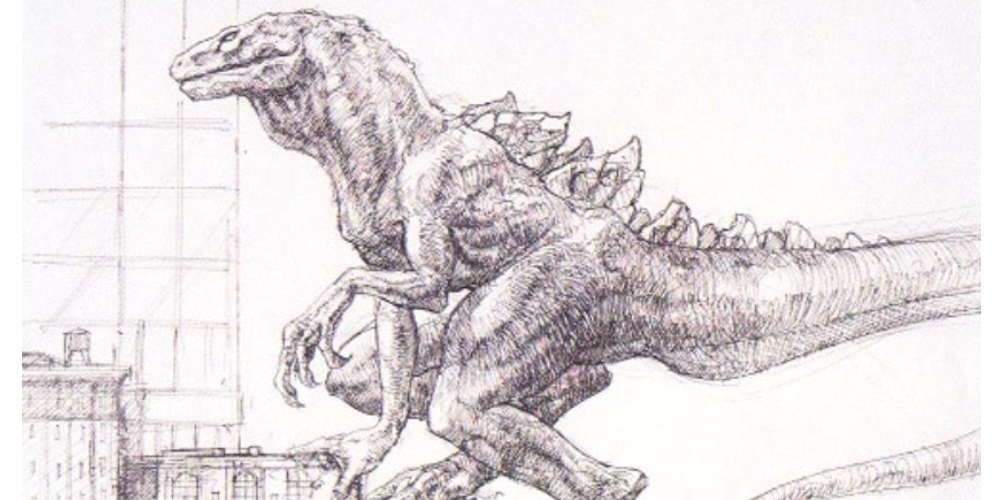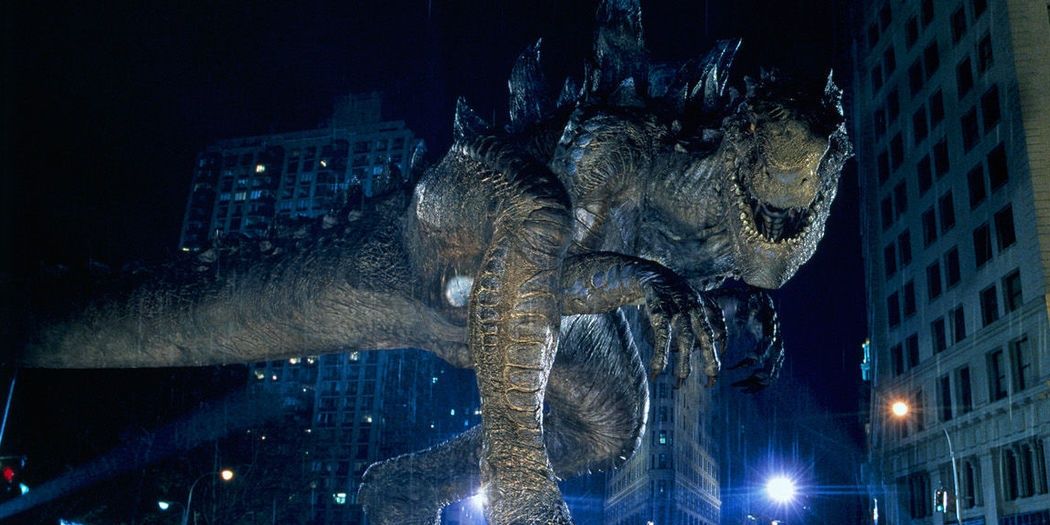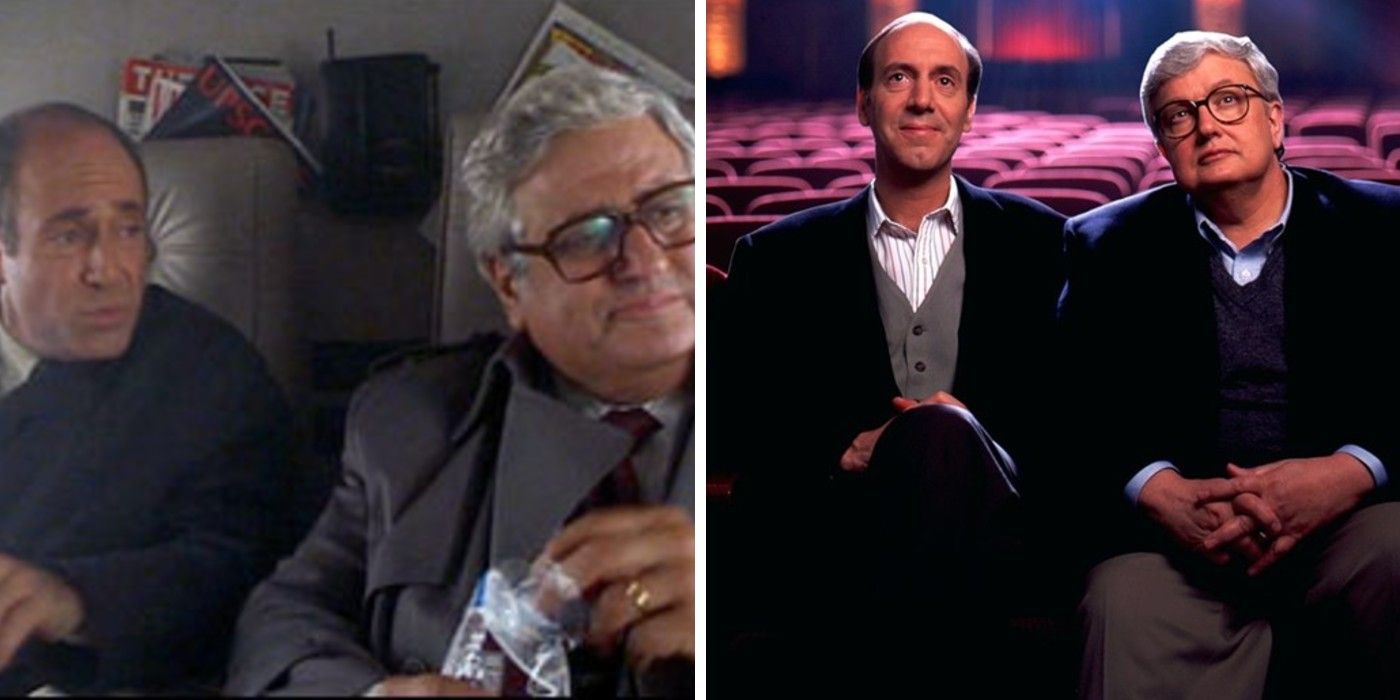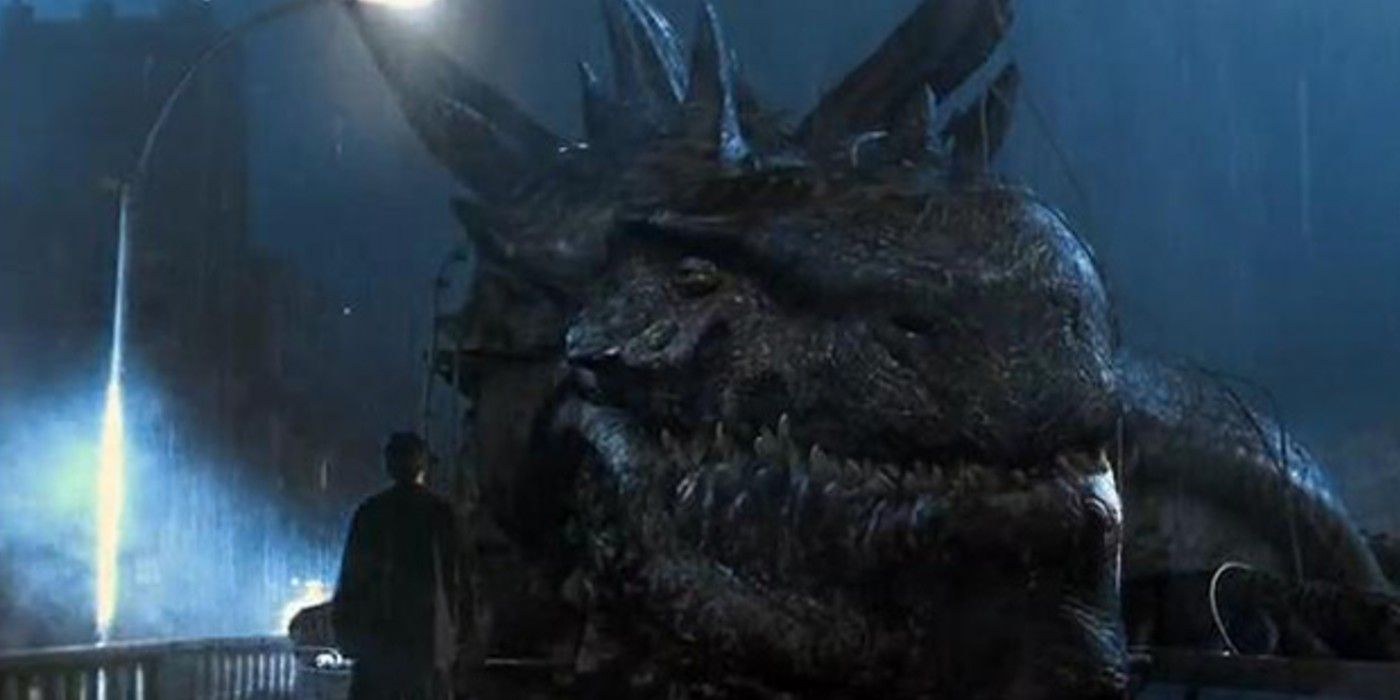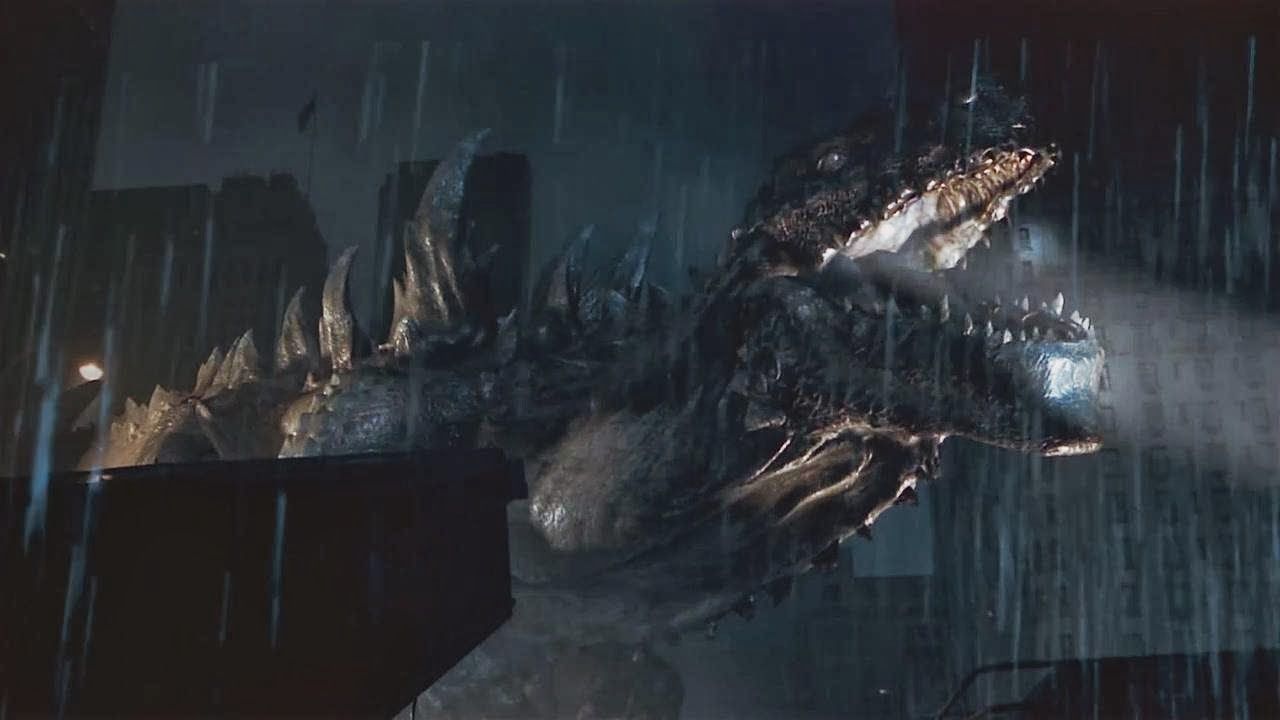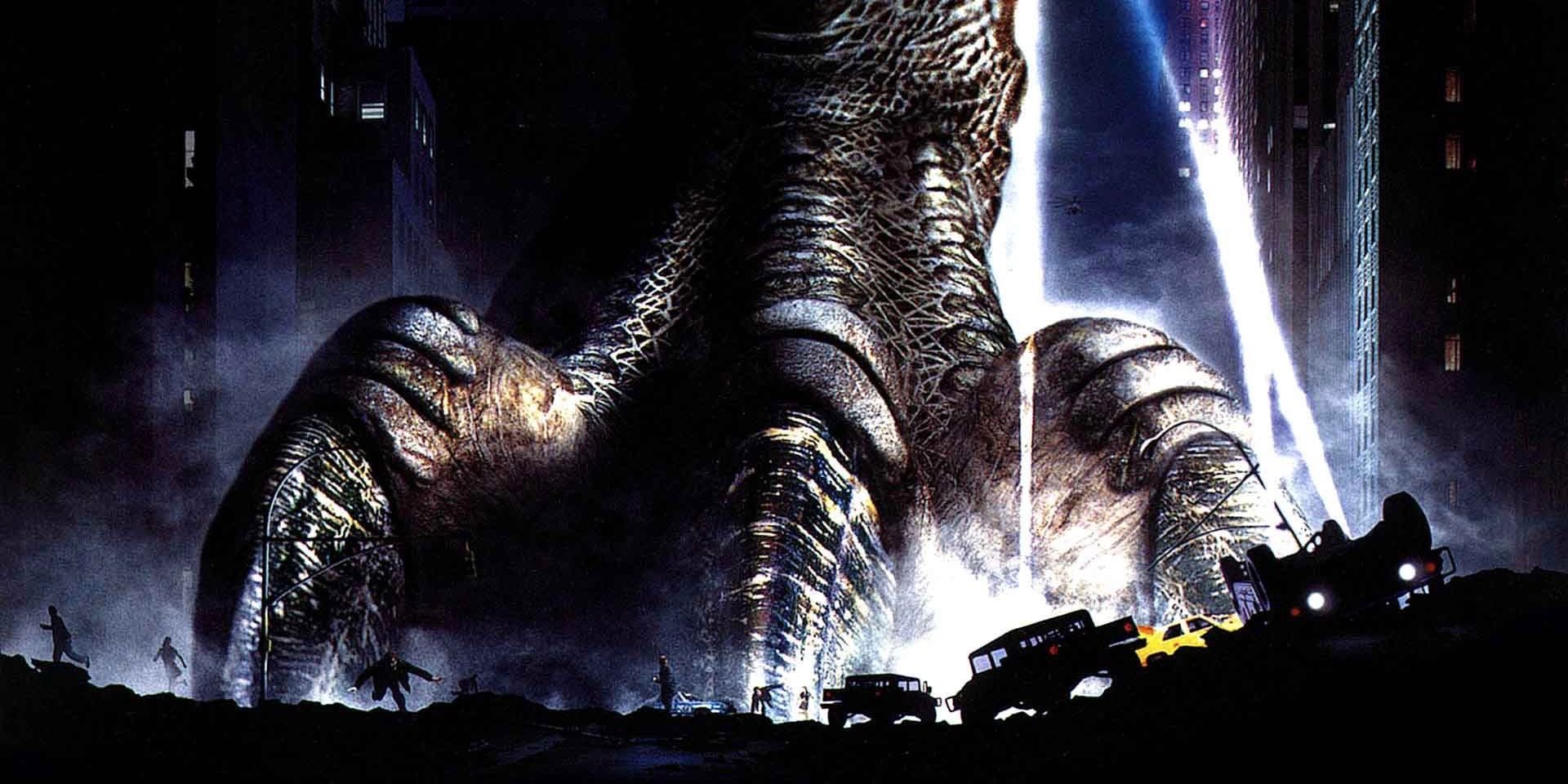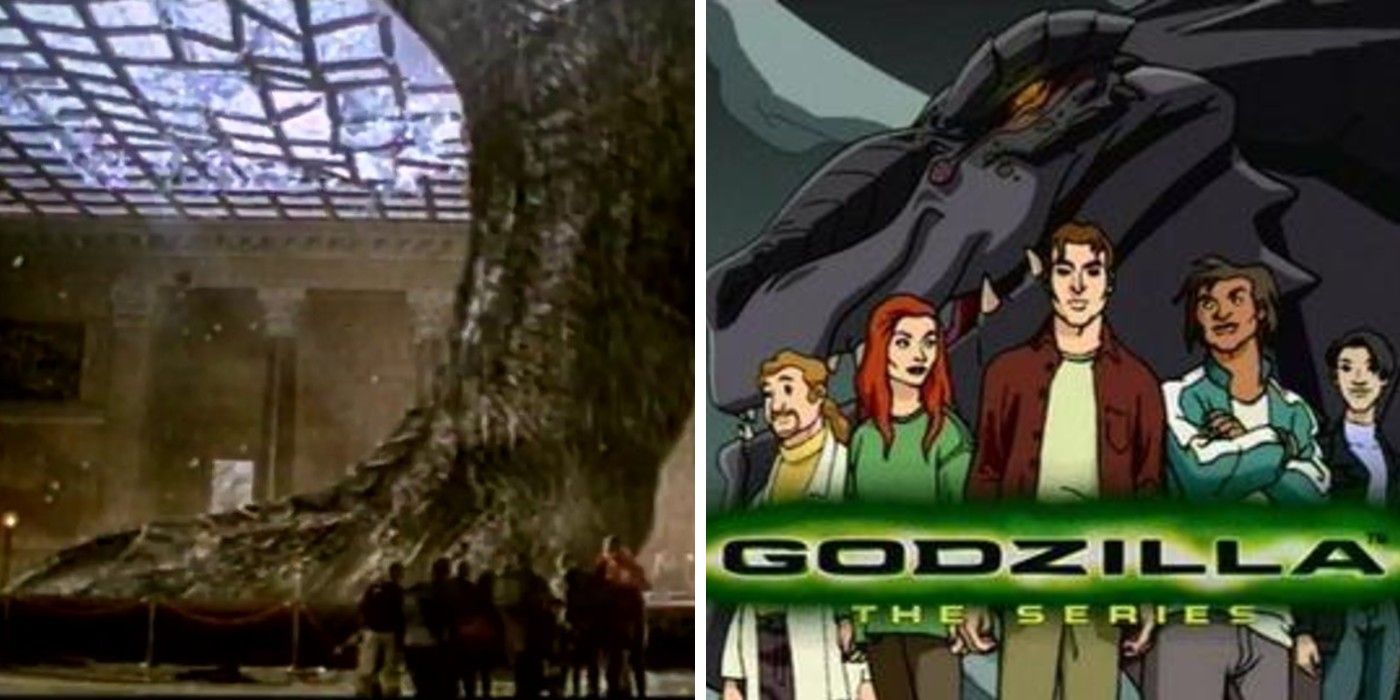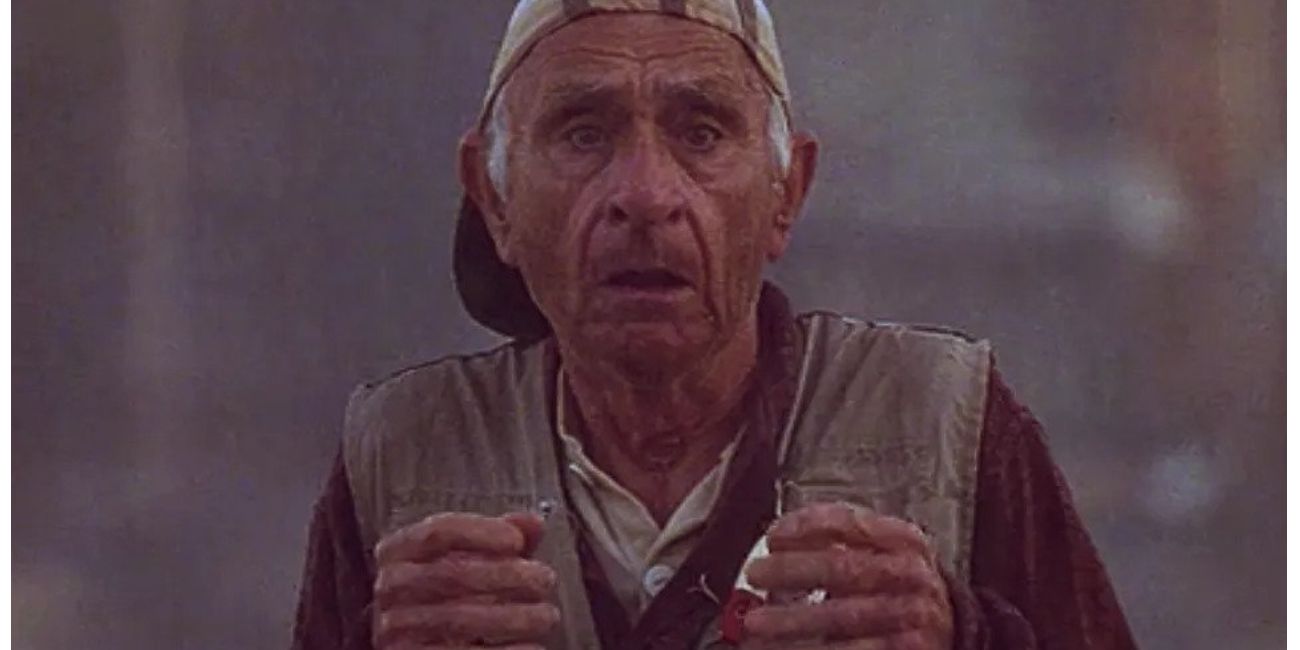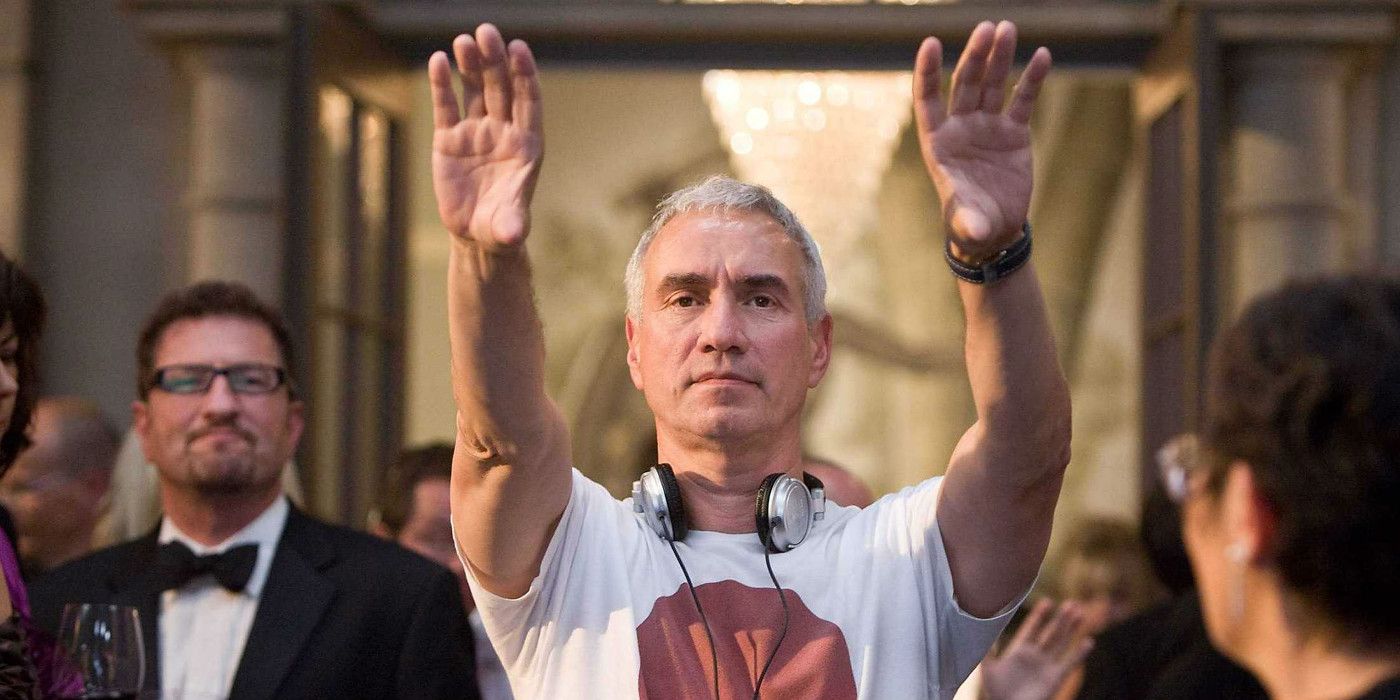After cementing its status as a cult figure in Japanese pop culture, the destructive sea monster known as Godzilla aka Gojira got its Hollywood debut in 1998 with Roland Emmerich's Godzilla. Although Emmerich was surfing on the waves of success with his disaster films, Godzilla proved to be a heavily disappointing experience for fans of the original franchise. The film made good money at the box office but was heavily panned for its loose storyline, lack of compelling characters, and a dumbed-down premise with the titular monster being reduced to a VFX prop and nothing else.
The following trivia would attempt to understand how 1998's Godzilla was made and what went wrong.
The Marketing Was Really Tacky
The '90s saw promotional campaigns that would be frowned upon today, and Godzilla is no exception. The movie's promo on its posters read 'Size Does Matter .' While this highlighted the obvious gigantic proportions of the monstrous lizard, writer-producer Dean Devlin clarified it was also used to distinguish the film from Jurassic Park. The ads got even tackier with lines like 'His foot is as long as this bus!' These tacky marketing strategies were mocked a lot later on.
Before George Lucas's disastrous comeback Star Wars: Episode I - The Phantom Menace, a website dedicated to the first Star Wars prequel mocked Godzilla by saying 'plot does matter,' implying it had none. Even the trailer for Small Soldiers finds a group of action figures typing up a giant lizard. This is hammered in by a character saying 'Size doesn't matter.'
Emmerich Ordered Godzilla's Design To Be Changed
Godzilla usually looks like a robust, slow-moving creature who usually walks upright on his two legs, with a heavy tail that destroys everything in its path. More than terrifying, the character's physique and design were pretty unique. But Emmerich's version is more in the lines of a lean iguana-like dinosaur.
Greek-French production designer Patrick Tatopoulous was hired by Emmerich to design the beast. One major instruction that he got was to make its body such that the creature can run very fast. Even though the design was radically different from any of Godzilla's previous incarnations, Japanese production company Toho (the owners of Godzilla's rights) eventually approved this redesign, stating that the design kept the spirit of Godzilla.
Godzilla's Only Has 11 Minutes Of Screentime
What's ironic is that despite the film's title, the grand advertising, and the general buzz around the film, Godzilla appears in his Hollywood debut for meager screentime of 11 minutes. Many artists who were originally involved with the Toho originals were disappointed with Godzilla's lack of screentime and intensity.
Perhaps one of the most significant criticisms came from Kenpachirô Satsumam who played Godzilla for a decade, spanning from 1985 to 1995. He reportedly walked out from the film's screening, saying that 'It's not Godzilla. It doesn't have the spirit.'
The Worst Characters Were Cheap Shots Fired At Roger Ebert & Gene Siskel
Film critic duo Roger Ebert and Gene Siskel have been pretty influential with their reviews and their 'thumbs down/thumbs up' grading scale. Emmerich's previous films, Stargate and Independence Day, might be cult favorites today but they didn't fare well with critics, including Ebert and Siskel. In an attempt to seek petty vengeance, Emmerich and Dean Devlin's screenplay parodied the critics by giving them the roles of the least likable characters in the film.'
Mayor Ebert and his assistant Gene campaign for mayordom with the motto 'Thumbs Up for New York' in the middle of a monster attack. By the end, Gene is disappointed with his boss and ends up giving a 'thumbs down.' Ebert and Siskel did pan the movie a as expected and even considered it to be one of 1998's worst. And yet, Ebert was surprised how the movie wasn't mean-spirited enough towards him and his partner. "They let us off lightly; I fully expected to be squished like a bug by Godzilla," Ebert wrote in his print review for The Chicago Sun-Times.
Godzilla wasn't supposed to die
Before the film could enter production, Toho Studios sent a detailed dossier to Tristar instructing the Americans involved detailing several roles while dealing with the reptilian character. Some of these rules included the fact that the beast could be shown eating only fish, no humans.
It was further added that Godzilla had to have not more than three toes on his feet and four fingers on his hands. He also didn't have to die in the film. However, most of these points were actually disregarded. Unlike in the 2014 reboot, Godzilla succumbs to its own wounds and dies.
GINO: Godzilla In Name Only
The original Japanese Godzilla films garnered a cult following among many Americans. So, naturally, there was much hype around the 1998 film's release. But with the disappointment that accompanied the film, many fans began referring to Godzilla as G.I.N.O, an acronym coined by film critic Richard Pusateri that stood for 'Godzilla In Name Only'.
In fact, a few reiterations of Emmerich's monster were used in Japanese Godzilla mythos (like the 2004 film Godzilla: Final Wars) known merely by the name 'Zilla.' It's speculated that this name was used because Emmerich's version took out the 'God' from Godzilla.
It Served As Other Countries' Introduction To Godzilla
Even though it was panned in Japan and America, the film was actually well-received in the markets of certain foreign countries. In an age of less accessible cinema and internet, the Japanese version wasn't that known universally yet and was seen as childish or laughable.
Hence, it did end up becoming the third highest-grossing movie of 1998 in terms of international standards. Such was its impact that some fans were disappointed with the 2014 reboot - even if it was more favorably received among critics and regarded as being more faithful to the originals.
The Missing $600,000 Footage & Scrapped Sequels
Perhaps in another attempt to subtly mock Jurassic Park, a teaser for Godzilla was released for theaters a year before its release. The footage worth $600,000 finds Godzilla's foot trample a museum along with the skeleton of T-Rex with it. However, despite its hype, this scene never made it to the final cut of the film.
After the critical backlash and an uninspiring box office performance, the two planned Godzilla sequels were scrapped and an animated series was started that aired only for one season. In this series, one of Godzilla's eggs survives at the end of the film and hatches on to Nick (Matthew Broderick's character) thinking he's its parent.
You hate on Godzilla, You get eaten by Godzilla
Even though Roland Emmerich didn't violently attack his Ebert and Siskel lookalikes, he still made Godzilla eat a lookalike of JD Lees. The first New Yorker who gets killed by Godzilla closely resembles JD Lees, also a harsh critic of the film.
Lees was an editor of a Godzilla fan magazine who wrote many articles deeming the film unworthy to be a Godzilla film. His writings began to be circulated even when the movie had just entered production. Hence, inserting the lookalike in the film was a conscious decision on part of the filmmakers.
Emmerich Was Not Tristar's First Choice
Before Emmerich, many other renowned directors were asked to take up filmmaking duties for Godzilla's Hollywood debut. Among these big names were Tim Burton, James Cameron, Joe Johnston, and Paul Verhoven, all of whom passed on the project. Jan De Bont was assigned later, and he grew really passionate with an original design and story. But due to his intended budget at $150 million, he was let go, making way for Emmerich who could ensure that the movie can be made under $100 million.
However, to keep the monster's look secret and to maintain tight deadlines of production, the studio didn't keep any test screenings. Tristar has considered this to be a big mistake now, having said that the movie's mistakes could have been improved before its release.

